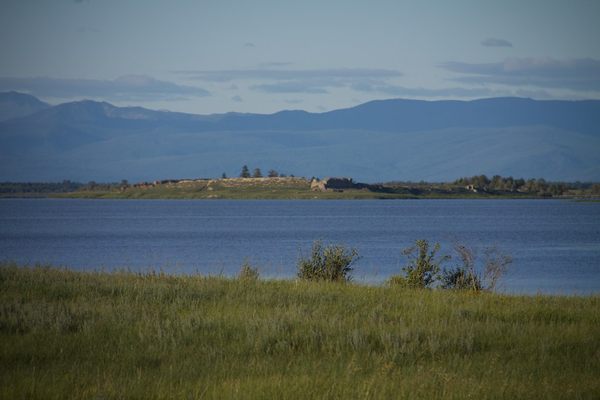The large archaeological hotspot known as Por-Bajin sits on an island in the middle of Tere-Khol Lake, and while most of the site sits right on the surface it’s still one of the most mysterious ancient sites in Russia.
First rediscovered in 1891, the walled rectangular ruins were initially thought to have been a fortress. With the main wall enclosing a number of what were once smaller structures surrounding a larger main building, the site is arrayed in a similar fashion Chinese royal palace complexes (although on a much smaller scale). Researchers have determined that the site was probably created in the 8th century CE by the local Tuvan population, however, while the ruins of the buildings stick out clear as day, there seems to be little to no debris or leftover evidence of human life at the site.
This lack of evidence as to the daily activities of the builders of the site had baffled researchers about the true purpose of the site. Many early theories seemed to jump to the conclusion that it was a military fortress due to the large outer wall, but its secluded location (on an island in the middle of a Siberian lake) and lack of daily accoutrements has poked some holes in that thinking. The current prevailing theory is that the site was actually a Buddhist temple complex of some kind, although this too is based only on observation, and not artifact evidence.
In 2020, an international team of researchers announced they had managed to date Por-Bajin not only to a specific year in the 8th century, but to a specific purpose. Using isotope analysis of some wooden timbers in the site’s foundation, the team found that construction started in 777, when Tengri Bögü Khan, a newly converted follower of Manichaeism, was the local ruler. Two years later, the complex was complete, and the khan was killed in an uprising that arose from opposition to his religion.
Because the site was never used, the researchers suspect Por-Bajin was to be a monastery for Manichaeists, but its ruler was toppled before it could be put to use. Hence the absence of any activity on the site.
Though not certain, it is a far cry from previous hypotheses. Whatever the truth, Por-Bajin continues to fuel the minds of archaeologists and visitors in equal measure.
Community Contributors
Added by
Edited by
Plan Your Trip
The Atlas Obscura Podcast is Back!



















Follow us on Twitter to get the latest on the world's hidden wonders.
Like us on Facebook to get the latest on the world's hidden wonders.
Follow us on Twitter Like us on Facebook